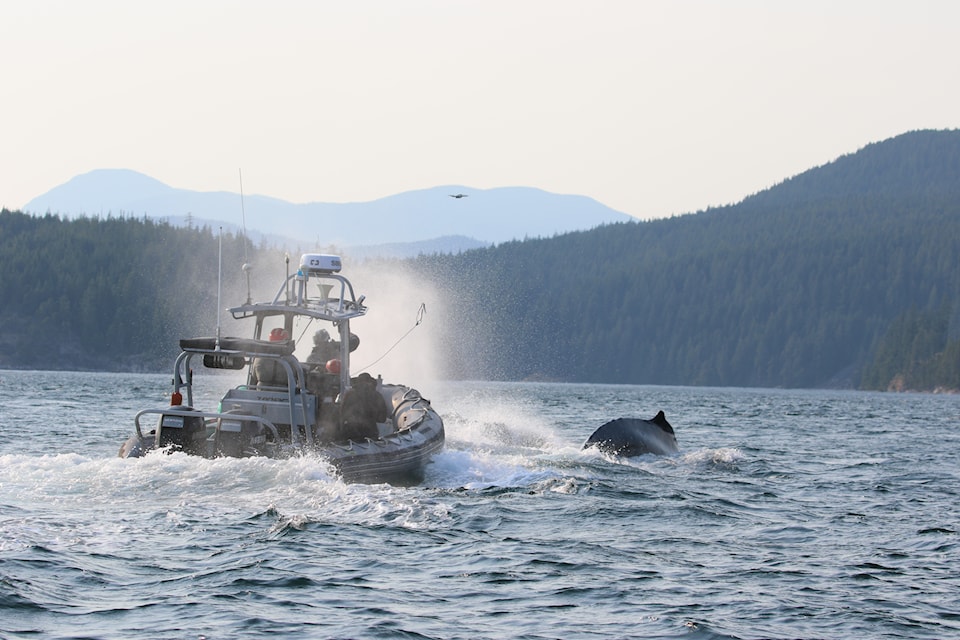A pair of Humpback Whales spotted entangled together near Quadra Island last Thursday were freed thanks to quick reporting and a speedy response from DFO and Straitwatch, a local NGO.
DFO Marine Mammal Coordinator Paul Cottrell was part of the response to help disentangle the whales. The pair of whales were first spotted by a group of kayakers between Quadra Island and Read Island, east of Campbell River. They quickly called the DFO hotline, prompting a fast response from Cottrell and the other team members to reach the whales on the following day.
"They saw one whale that had an orange scotchman (buoy) in tow, and there was another whale close next to it," Cottrell said. "We were able to get out there the next day with Straitwatch, which is a non-government organization ... based out of Quadra.
"By early afternoon Straitwatch was able to locate the whales," he said. "The buoy was no longer trailing, and our team was en route."
After nearing the two whales, the team sent up a drone to get a better view of the situation. Cottrell said that both whales were tied together. One animal named Mogul (BCY1108) had a rope wrapped around his pectoral area. The line was trailing behind him with the current, and had entangled the next whale, named Raza (BCX1852).
"It was through the mouth of Raza and then there was another line trailing behind," Cottrell said. "It was a real rat's nest. I've never worked on two whales concurrently on the same entanglement, so this was something that we wanted to be very careful with. It's dangerous to disentangle one whale, but when you've got two that are entangled, there's a lot of unknowns and the complexities are huge."
To ensure they weren't injuring the animals further, Cottrell and the team continued monitoring the whales. They decided they'd be able to put a working line — a rope that would hopefully create enough drag to disentangle the whales — onto the animals.
"We were able to get the first grapple on the first go, and then since they were so close together, we had to get pretty close to them," Cottrell said. "We put a couple of large scotchmen just to add a bit of drag to see if we might loosen the gear, and it did cause some movement."
After an hour or so, they added more drag to the line, and within fifteen minutes the line loosened and came free from both animals.
"It was a long, long afternoon," Cottrell said.
They continued monitoring the whales with a drone to ensure there weren't other parts of the gear still entangled, but found that they were both free.
"It was just amazing feeling to realize that that they both were gear free and they were still travelling in unison," he said.
The whales were born in different parts of the Pacific, one from the Hawaiian group, and one from the Mexican group.
Cottrell said that they'd helped on average one entangled whale per week so far this summer, but said that a large reason for that is the increase in humpback whale population in inland waters.
"I think it's primarily related to there being a lot more humpbacks in inshore waters," he said. "It's a really great story. But unfortunately with more whales, we're getting more entanglements. That's why we're here: we're the last line of defence when an animal gets entangled. We can try to get that gear off and hopefully save that animal's life."
Cottrell said that anyone who sees a whale in distress should call the DFO hotline at 1-800-465-4436. The hotline is monitored 24/7.
"There was a sighting (of the whales) a few days later up in Alert Bay," Cottrell said.
The whales were still free.



